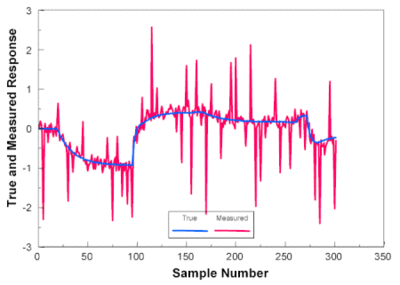Difference between revisions of "Analog setpoint"
| [checked revision] | [checked revision] |
| Line 1: | Line 1: | ||
| + | [[File:Noise1.gif|thumb|Analog reference signal is ideally clean and precise. However, in problematic cases [[Electromagnetic interference|electromagnetic interference]] is coupled to the signal causing inaccuracies like noise and offset error/drifting.]] | ||
Analog reference is one of [[Reference signal|reference signal]] types used in motion control. | Analog reference is one of [[Reference signal|reference signal]] types used in motion control. | ||
Revision as of 00:05, 14 June 2013

Analog reference is one of reference signal types used in motion control.
The most typical reference voltage range is +/-10V where
- -10V equals the most negative reference (-100%)
- 0V equals zero reference
- 10V equals most positive reference (+100%)
- Any value between is interpolated linearly
Another common voltage range is 0..5V where zero reference may be at 2.5 VDC (bias voltage).
Differential signaling
Analog reference input in target device is typically differential. Differential input requires 3 wires from source device:
- Positive input
- Negative input
- Ground
The actual reference value will be calculated from the differential of positive and negative inputs. This eliminates error from ground currents and also reduces sensitivity to EMI noise.
Differential signaling on wikipedia
Example
Lets assume +/-10V is used as torque reference in VSD drive. In this case 0V equals no torque, and 10V equals 100% of peak torque configured in the drive, 5V equals 50% torque etc.
Peak torque can be configured to drive with GDtool as peak current limit. Torque and current are directly proportional, so torque reference is also a current reference.